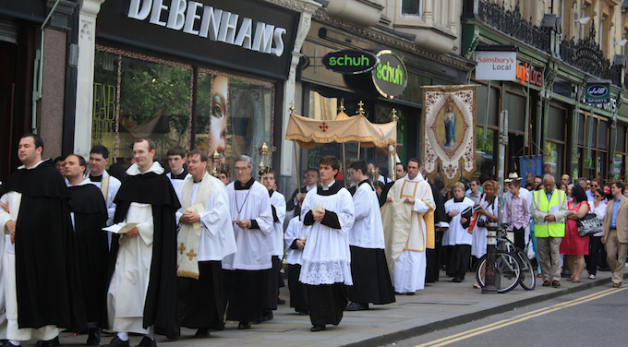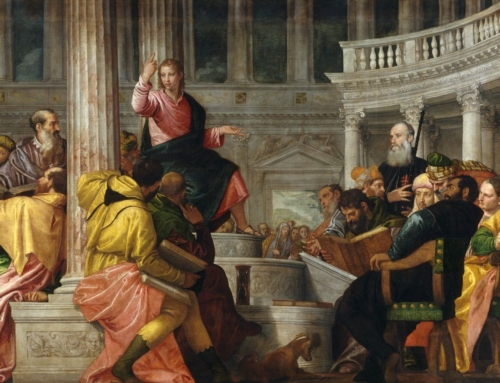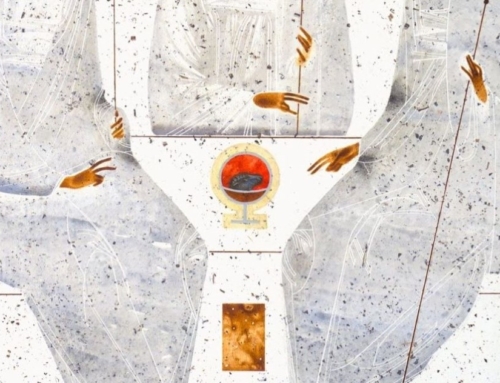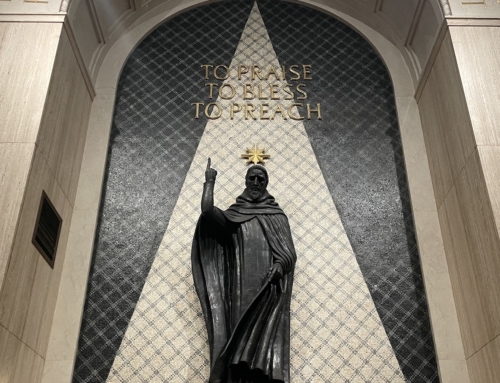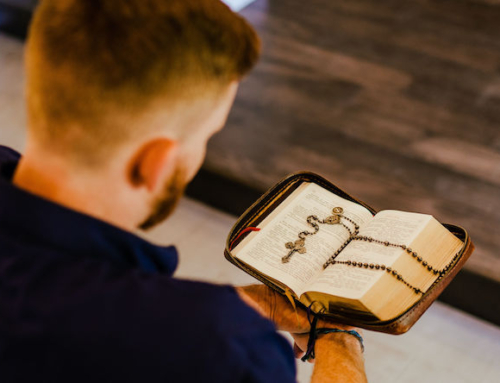A recent book, American Catholics in Transition, drawing on numerous surveys conducted over a period of twenty-five years, reports that 37% of self-identified Catholics in America do not believe in the real presence of Christ in the Eucharist.
Significantly, however, only 4% claim that they both know and disbelieve the Church’s teaching. The great majority of unbelievers in the real presence—1 in 3 of self-identified Catholics—claims not to know what the Church teaches on the subject: namely, that the bread and wine are really changed into the body and blood of Christ.
The liturgical calendar provides us with an opportunity to reflect on this mystery. The Feast of Corpus Christi (“the Body of Christ”) was instituted in the thirteenth century in order to foster a greater appreciation of the Lord’s presence in the Eucharist. In the U.S. it occurs this Sunday, though in other countries it happens today, the Thursday after Trinity Sunday, as a kind of second Holy Thursday (the day of the Last Supper).
The Gospel reading for Corpus Christi is John 6:51-58. The passage follows the multiplication of the loaves and consists mainly of Jesus’ response to a request from the crowd: “Sir, give us always [the bread of God . . . which comes down from heaven and gives life to the world]” (Jn 6:33-34). Jesus’ answer is clear and emphatic: “I am the living bread that came down from heaven . . . and the bread that I will give is my flesh for the life of the world” (6:51). Jesus is insistent about this. In the eight verses of the liturgical text (which is only a selection from a larger passage), words meaning “eat” and “drink” appear a total of ten times, and the words “food” and “bread” occur six times in sum. Jesus persistently associates these words with himself, with his “flesh” (six times) and with his “blood” (four). Eventually he adds the adjective “true”: “my flesh is true food, and my blood is true drink” (6:55).
Jesus also uses different words for “eat.” In the first part of the passage, he uses a more generic term, which was used to denote the eating of a meal or metaphorical consumption, e.g., the devouring of books. In the second part, however, he begins to use a verb that means “gnaw” or “chomp.” Presumably, Jesus is driving home his point. What’s required is not only spiritual assimilation, but also oral ingestion. The eating that Jesus is talking about is bodily; it’s animalistic. The translation in the Lectionary hints at this animality in verse 57: “the one who feeds on me will have life . . .”
Some of Jesus’ disciples objected to the idea that they should eat his body and drink his blood. They said, “This saying is hard; who can accept it?” (6:60). Many were so repelled that they stopped following him altogether: “[they] returned to their former way of life and no longer accompanied him” (6:66). But Jesus did not run after them trying to explain that he was only speaking symbolically. Still less did he open the doctrine up for negotiation. He simply turned to the Twelve and asked, “Do you also want to leave?” (6:67).
Perhaps the defectors thought Jesus was proposing a straightforward cannibalism, such as one might imagine about the worst pagans. Maybe some would object that Jesus was too concerned about “externals.” Today people might say that they don’t go to Church because they go to God “directly,” from home or from anywhere. The Christian claim is that God has already come to us directly in Christ, who declared, “Unless you eat the flesh of the Son of Man and drink his blood, you do not have life within you” (6:53). Now, ingesting the Son of Man is not normally something people can do at home. So Jesus is inviting us to Church: “Whoever eats my flesh and drinks my blood has eternal life” (6:54). These are the options he gives us: no life or eternal life.
The Eucharist contains “the whole spiritual good of the Church, namely Christ himself” (Catechism of the Catholic Church, 1324). This great gift is offered to us as a sacrament, that is, as a sacred, saving sign. But unlike some other signs (for instance, a photo of a loved one), in the case of the Eucharist, the sign literally involves the real presence of Christ in his humanity and divinity. This is why Catholics genuflect and kneel in the presence of the Eucharist. And this is the reason for the adoration of the Blessed Sacrament which is characteristic of celebrations of Corpus Christi. After the consecration, there is no longer any bread or wine on the altar. Jesus is there under the appearances of bread and wine, offering himself for the life of the world.
✠
Image: Photo credit Fr. Lawrence Lew, O.P.

